Importing images into WordPress is made simple with our plugin WP Ultimate CSV Importer. Whether you’re migrating from another website, transferring content, or adding large volumes of media, this guide will walk you through the process of importing bulk images to your WordPress site.
Prerequisites #
Before you begin, make sure you have the following:
- A WordPress website with the WP CSV Importer plugin installed.
- Enable the Cron entry on your website for seamless image import. To enable the Cron, refer here
- Access to the media files you want to import (either on your local computer or accessible via a URL).
- Your CSV file contains the basic image details, URLs, or paths to be imported.
Import File From Desktop: #
Step 1: Prepare Your Import File #
The import file consists of a ZIP file containing media images and a CSV file with basic image details.
To prepare your import file, you first must collect or organize all the images to be imported as a zip file.
Your ZIP file may contain a single folder, more than one folder, or no folders with images.
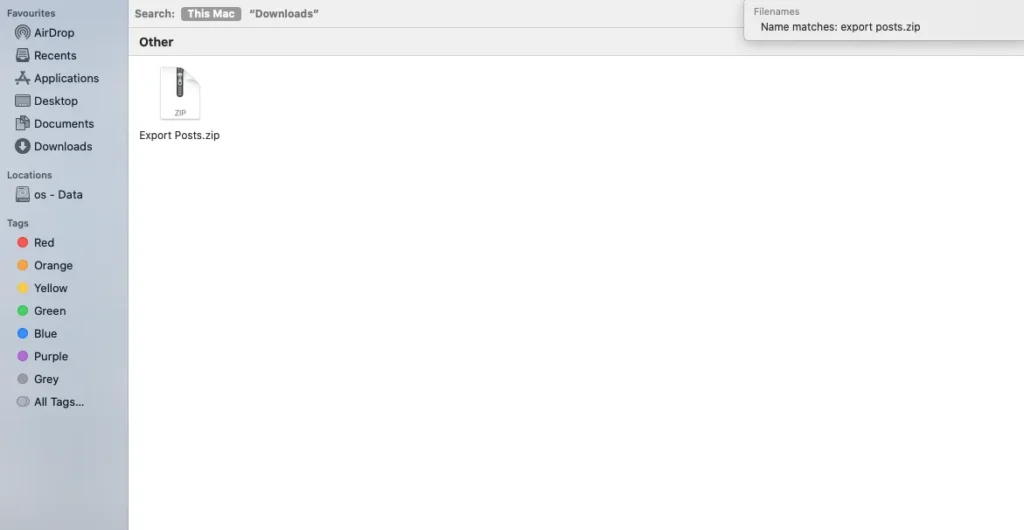
Then prepare a CSV file with the image details such as File name, Title, Caption, Alt Text, and Description.
The file name in the CSV should be in the format Folder name of your Zip file/ image name with an extension like.png
For Example: If your Zip folder name is Export Posts and the specific image name is Advanced Filter, then the file_name on your CSV for that particular image should be Export Posts/Advanced Filter.png. You can import images using an XML or CSV file.
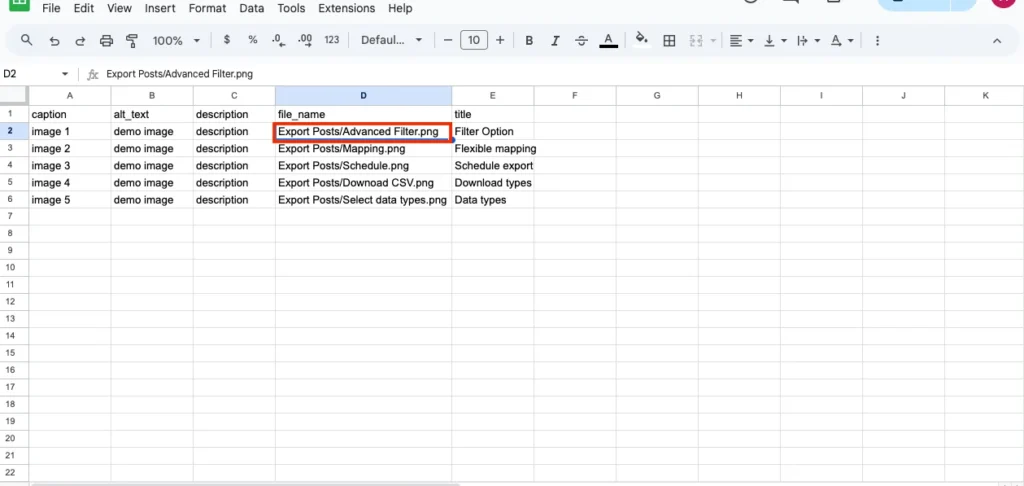
Step 2: Upload Your Import File #
- Navigate to the WP Ultimate CSV Importer in your WordPress dashboard.
- Click on Media to open the import media wizard.
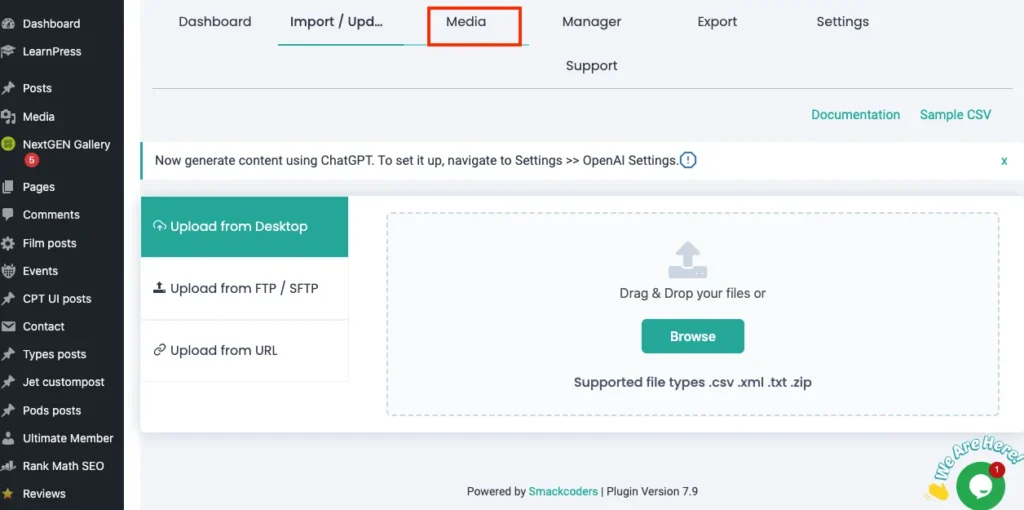
3. Choose the Upload method, as Device as we are going to import media files from Desktop. Then click on Continue.
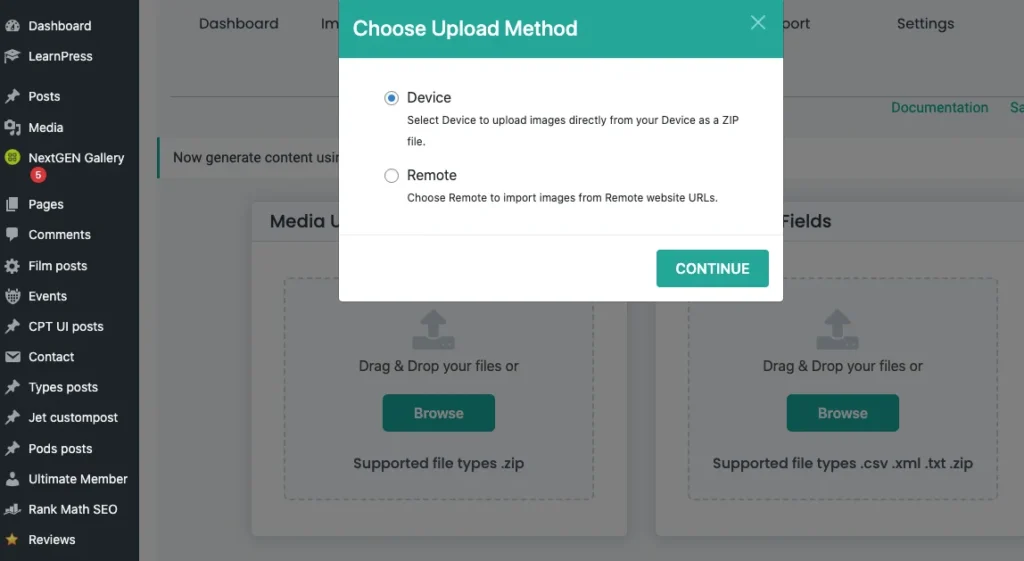
4. Upload the Zip file of the Images by clicking on the Browse button of the Media upload fields.
5. Once you upload your zip file, it will display all the image details in the Zip folder. Select all the images and click Ok. If you don’t want to upload any specific image to the Zip folder, then uncheck the checkbox corresponding to the desired image.
6. Now upload your CSV file containing image details by clicking on the Browse button on the CSV upload fields
7. For new import, click on the Fresh import icon.
8. To update the image, click on Update Content. Then click on Continue.
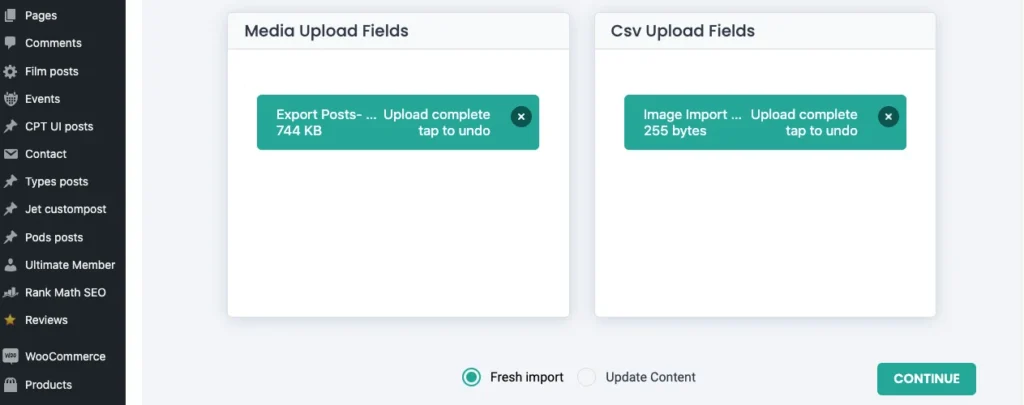
Step 3: Map Your CSV Field Headers #
After uploading your file, the next step is to map the field headers to the appropriate fields.
- If you have already done the image import, you can use the saved template or choose to create a new mapping.
- Map the field header that contains the image fields of CSV such as file_name, alt_text, title, caption, description, etc. with its appropriate fields.
- In the CSV Mapping step, find the column in your CSV that contains the image paths (e.g., FolderName/ImageName.png).
- Map this CSV column to the ‘File Name’ field in your WordPress mapping section.
That is Map the file_name of the CSV field with the File name of the WP field. - Save the import template that can be used for later import.
Step 4: Import Your Images #
- Once you have mapped the image columns, continue to Manage media uploads. Choose from the below options:
- Use media images if already available
- Overwrite the available images
- Always create new images
- Once done, you are ready to begin the import process. Now, Click on Import.
- Once the import is complete, you will see a summary of the import process, including the number of images successfully import
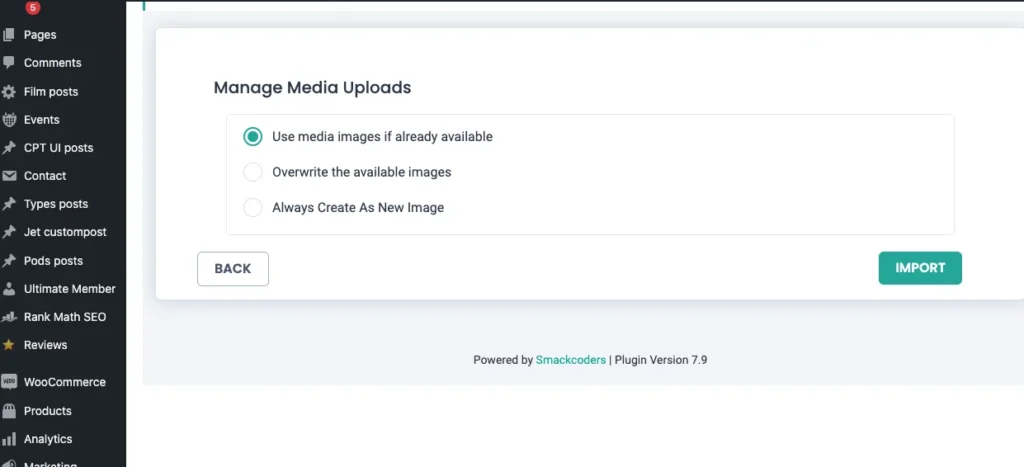
Step 5: Verify the Import #
After the import is complete, you can verify the success/failure statuses of the imported image by clicking on View log or Import Summary. You can verify the image import in your WordPress site by navigating to your Media Library in WordPress and ensuring the images have been uploaded correctly.
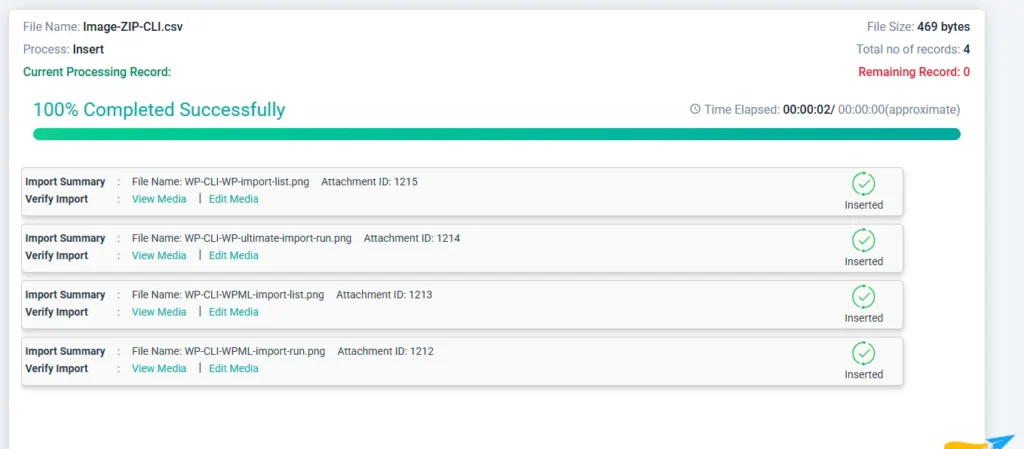
Advanced Topic: Import Images from URL #
The Import process of images from URL is the same as that for importing images from a desktop.
Here, you need only the CSV file and not the Zip file.
On preparing the CSV file, you have to provide the actual URL field(mandatory) along with the basic image details such as file name, title, caption, etc.
Note: The actual URL is the URL of your desired images that are hosted elsewhere other than your website. Also, ensure that all the images are publicly accessible.
Once you prepared the CSV file, then follow the below steps to import images from the URL.
- Navigate to WP Ultimate CS Importer-> Media
- Select the upload type as Remote as we import images from the external URL
- Then browse the CSV file with all the image URLs that you need to import
- Map the columns of the CSV fields with their desired image fields
- Configure the import settings and click on Import to import images from external URLs.
- Verify the image import on the Media library of our WordPress site.
Troubleshooting #
- Image Not Displaying: Ensure that the URLs in your CSV or XML file are correct and publicly accessible.
- File Permissions: If you’re importing local images, make sure the file permissions on your server allow the plugin to access and upload the files.
- File Size: Large image files may be rejected depending on your hosting server’s file upload limits. Try increasing the upload_max_filesize and post_max_size in your server’s PHP configuration if necessary.
Additional Tips #
- If you’re importing a large number of images, consider splitting your import file into smaller chunks to avoid timeouts or errors.
By following these steps, you’ll be able to import images to your WordPress site with ease and ensure your content is complete with media.
Frequently Asked Questions #
How can I import featured images to WordPress? #
With WP Ultimate CSV Importer, you can import the featured images of the bulk posts at a single import.
Follow the above steps explained in this guide to import your Featured images to WordPress.
You can import your images from a Desktop or URL. For more information or any queries on media import, you can contact us at [email protected].
